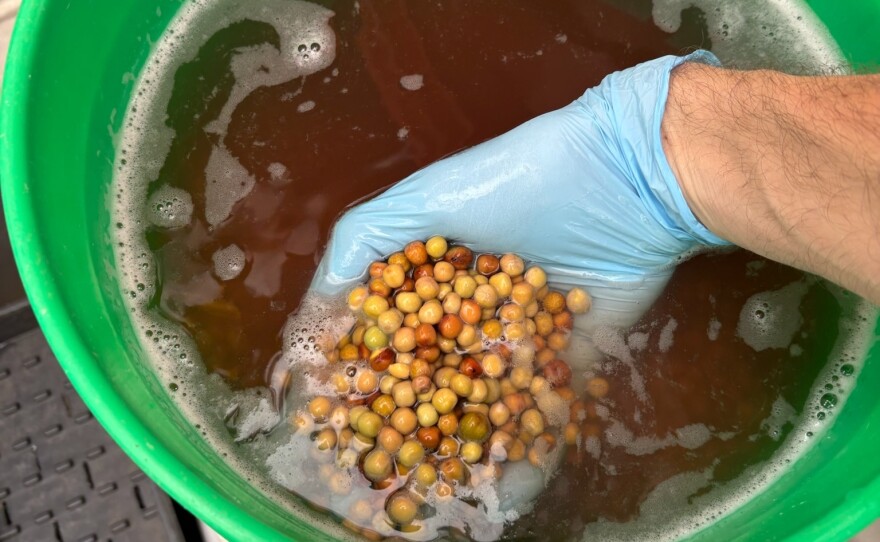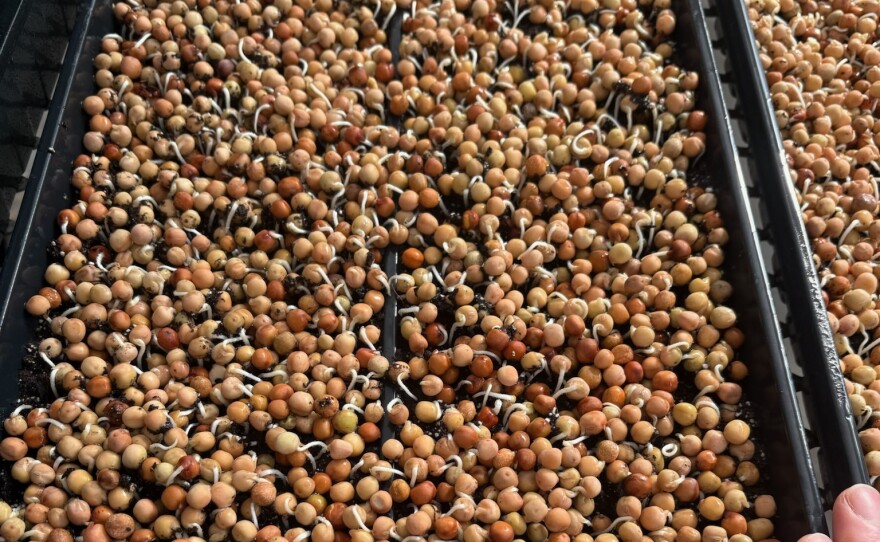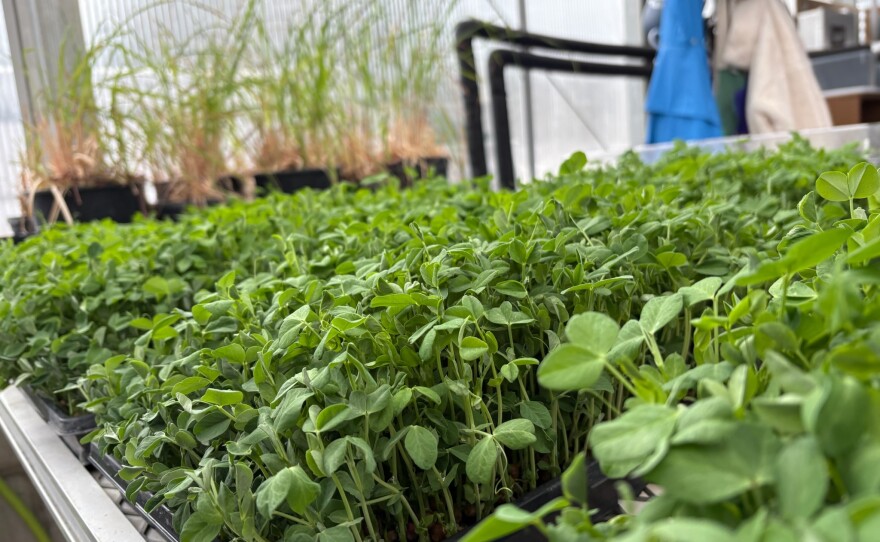Grow & Tell is IPR’s biweekly gardening segment to guide you through the growing season. In each episode, I’ll walk you through gardening tasks tailored for northern Michigan’s climate and soils — whether you're working with raised beds or patio pots.
Have gardening questions you want Grow & Tell to answer? Email me at dylan.kulik@interlochen.org.
Today’s tip: Pea shoots for quick, easy indoor gardening
I'm indoors today, sitting next to a tray of freshly harvested pea shoots — vibrant, six-inch greens that taste just as good as they look. Sweet, tender and full of flavor. These little plants are one of the easiest crops to grow, even if all you have is a sunny windowsill.
All you need is a container, some potting mix and a bit of patience. Let’s get growing.
Step 1: Get the right seeds
You’ll need pea shoot seeds, not standard garden peas. I use dwarf gray sugar pea shoot seeds, which I buy in bulk online. For most people, a smaller packet will do.
Step 2: Soak the seeds
Before planting, soak your seeds in water for 24 hours. They’ll swell up — almost doubling in size — and become plump and soft. That's exactly how we want them before we sow.
Step 3: Plant in a shallow tray
After soaking, sow the seeds in a shallow container filled with about an inch of moistened potting mix.
You don’t need anything fancy here. An old takeout container or a plastic Tupperware will work — just make sure it’s no deeper than an inch and has drainage holes at the bottom.
Spread the seeds evenly across the surface of the soil. It’s okay if they touch, but don’t pile them on top of one another. And here’s the key: don’t cover them with more soil. Just leave them sitting right on top.
Step 4: Sun, warmth and, most importantly, water
Place your tray in a warm, sunny spot. A windowsill works great.
Water gently every day until the shoots begin to emerge. After that, you can scale back slightly, but keep the soil consistently moist. These plants are mostly water, so hydration is key for healthy, tender greens.
Step 5: Harvest!
After about 10 days, your tray will be filled with a lush, green carpet of pea shoots. Once they hit about six inches tall, you’re ready to harvest.
Grab a small handful of the shoots, almost like a ponytail, and use scissors to snip them off about an inch above the soil. Leaving a little bit helps them regrow; you can expect a second harvest about 10 days later — just keep watering and give them light.
Eat them fresh, sautéed or however you like
Pea shoots are packed with nutrients and are pretty mild in flavor. My favorite way to enjoy them is a quick sauté until they’re just wilted, finished with a drizzle of toasted sesame oil.
But they’re also fantastic raw in salads, on sandwiches or as a garnish on just about anything. In the Interlochen cafeteria, they're put out as just another salad green.
Pea Shoot Growing Takeaways 🌱
- Use dwarf pea shoot seeds, not garden pea seeds
- Soak seeds for 24 hours before sowing
- Use a shallow tray with drainage and moistened potting mix
- Don’t cover seeds with soil — just lay them on top
- Keep in a warm, sunny spot and water daily
- Harvest at 6 inches, about 10 days after sowing
- Expect a second harvest about 10 days later
- Eat raw or lightly sautéed for a tasty, nutritious treat
After your second cutting, you can compost the remains and start over again. Repeat that process as many times as you want fresh pea shoots to eat!
That’s the beauty of these little guys: they’re quick, easy and satisfying. See you next time — and until then, enjoy your greens.













